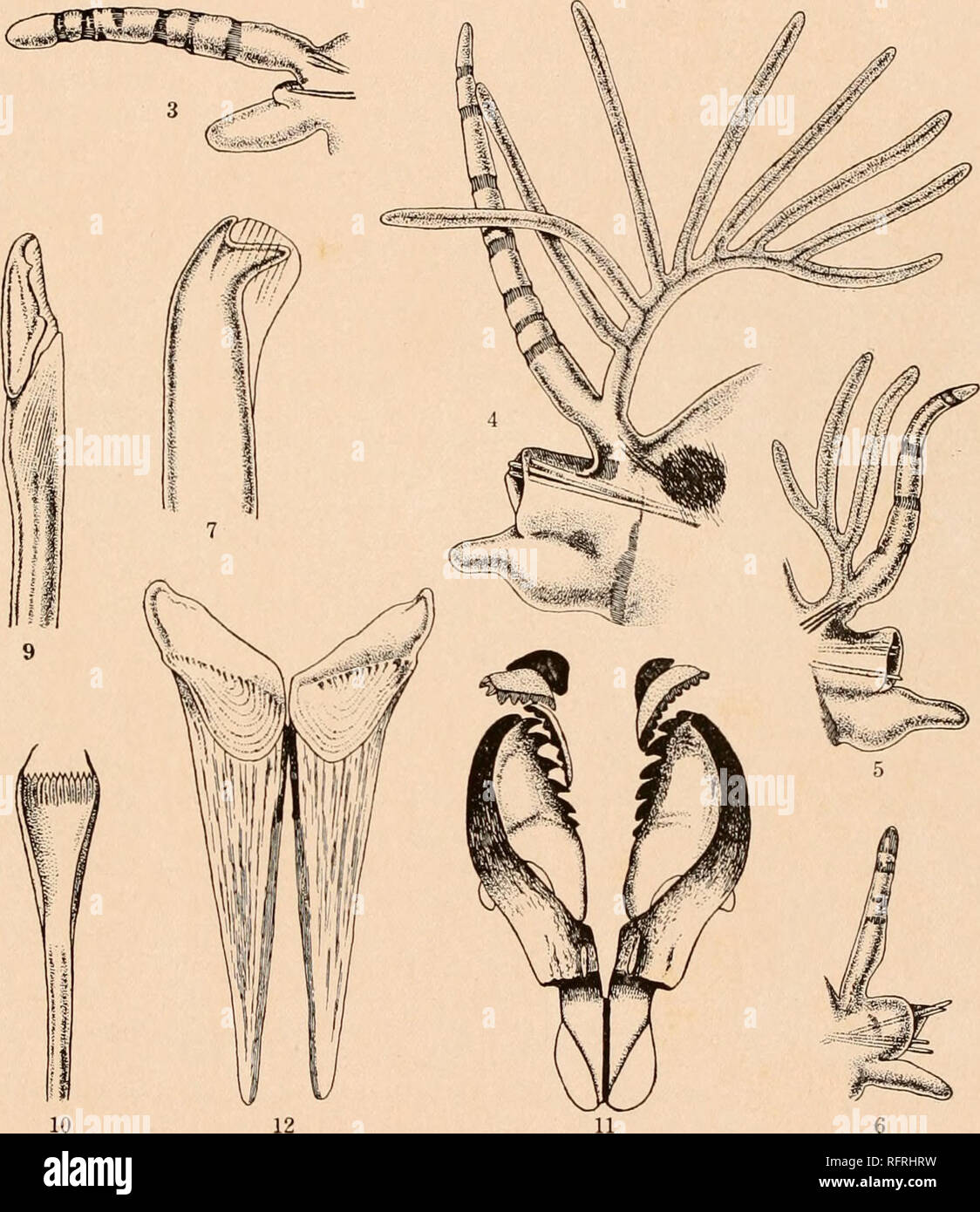. Carnegie Institution of Washington publication. LEODICID^B OF THE WEST INDIAN REGION. 13 The fifty-first parapodium (text-figure 5) resembles the tenth in general outline, but all parts are smaller and ventral aciculse have made their appearance. In a later parapodium (text-figure 6, the tenth from the pygidium) the post-setal lip is pointed at the apex and the ventral cirrus has lost its swollen base. The anterior parapodia have each two or three aciculse with bluntly rounded apices. By the fiftieth parapodium two others appear, lying ventral to the former variety, each with terminal and su

Image details
Contributor:
Book Worm / Alamy Stock PhotoImage ID:
RFRHRWFile size:
7.1 MB (373.2 KB Compressed download)Releases:
Model - no | Property - noDo I need a release?Dimensions:
1470 x 1700 px | 24.9 x 28.8 cm | 9.8 x 11.3 inches | 150dpiMore information:
This image is a public domain image, which means either that copyright has expired in the image or the copyright holder has waived their copyright. Alamy charges you a fee for access to the high resolution copy of the image.
This image could have imperfections as it’s either historical or reportage.
. Carnegie Institution of Washington publication. LEODICID^B OF THE WEST INDIAN REGION. 13 The fifty-first parapodium (text-figure 5) resembles the tenth in general outline, but all parts are smaller and ventral aciculse have made their appearance. In a later parapodium (text-figure 6, the tenth from the pygidium) the post-setal lip is pointed at the apex and the ventral cirrus has lost its swollen base. The anterior parapodia have each two or three aciculse with bluntly rounded apices. By the fiftieth parapodium two others appear, lying ventral to the former variety, each with terminal and subterminal teeth (text-figure 7) and with a hood covering its apex. Both forms of aciculaa occur in all parapodia posterior to these.. 12 11 TEXT-FIGURES 3 to 12. Leodice longicirrata Webster. 3. First parapodium x22. 4. Tenth parapodium x22. 5. Fifty-first parapodium x22. 6. Tenth parapodium in front of pygidium x22. 7. Posterior acieula X400. 8. Simple seta x400. 9. Compound seta x230. 10. Pectinate seta x400. 11. Maxilla x22. 12. Mandible x22.. Please note that these images are extracted from scanned page images that may have been digitally enhanced for readability - coloration and appearance of these illustrations may not perfectly resemble the original work.. Carnegie Institution of Washington. Washington, Carnegie Institution of Washington